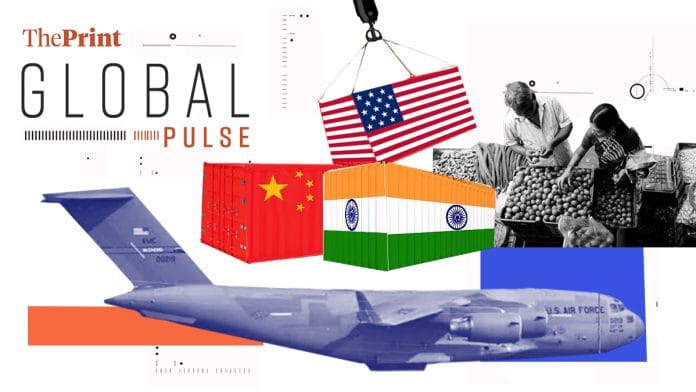New Delhi: The use of a US military aircraft to deport over a hundred illegal Indian immigrants, handcuffed and shackled, caused uproar in Parliament Thursday. It’s hit a nerve, reports The New York Times, creating a “political headache” for Prime Minister Narendra Modi.
“In a scramble to control the damage, India’s foreign minister, S. Jaishankar, told Parliament that deportation procedures ‘provide for the use of restraints’, and he said American officials had confirmed to them that women and children were not shackled,” the report reads, listing accounts of both the deported migrants and opposition parliamentarians.
His response, NYT observes, reveals a “delicate balance” that the government now has to establish: between containing domestic uproar and “demonstrating its strictness on illegal immigration to the Trump administration”.
The Modi government seems to be walking several tightropes and balancing several delicate scales, according to global media. The Economist turns its attention to the economy and how Modi’s request for divine intervention before the budget was presented mingled “public spirit with political self-interest”.
India urgently needed a change of approach to its slowing economy, writes The Economist, and massive tax cuts for the middle class might have been just the right answer—it’ll fuel consumption. Policy, too, has become more stimulative, the piece says, with the Reserve Bank of India announcing rate cuts, repo auctions, and outright bond purchases to improve banking liquidity.
These are all short-term measures that make economic sense. But meeting Indians’ longer-term aspirations is a more difficult task, writes the Economist. “It means building a broader middle class and supporting the creation of good working-class jobs.”
The piece adds: “…path to prosperity beaten by China, South Korea and other Asian countries—building low-value manufacturing before then attracting more complicated forms of industry—is becoming much narrower. The world has entered an era of protectionism and tariffs, and India must cope with the flood of cheap goods from China and an increasingly difficult American market.”
“In the absence of greater government ambition, India’s best hope may lie in more divine intervention,” it concludes.
Meanwhile, Global Times trains its guns to the narrative hype about India “replacing China”.
“The hype about India ‘replacing China’ in global economic and trade cooperation has been a subject of enthusiasm for Indian media outlets and some Western media outlets for a long time. However, such narratives are often based on idealised speculation regarding geopolitical considerations, lacking in-depth analysis of economic laws and market realities,” reads a piece, titled ‘Why will it be difficult for India to gain from US-China trade tensions?’
The matter, it seems, is that as trade friction continues between the US and China, India is trying to fill the gap by offering foreign investors better protection. But Global Times takes issue with this.
In the current supply chain ecosystem, China has solidified its position backed by manufacturing and technological strengths, it writes. “In contrast, India faces numerous challenges if it hopes to fill the gap caused by the US disruption to normal global trade and industrial cooperation in a short period of time.”
China is still very much an important trade partner for America, says Global Times. Many American companies have chosen not to leave China, it reminds its readers, which has “thwarted India’s hopes of attracting American companies to relocate their production lines due to US-China trade friction”.
The story admits that India’s manufacturing capabilities have grown rapidly in recent years, but it hasn’t yet developed the strength to replace China’s position in the supply chain. Indian media needs to stop hyping this possibility up, Global Times admonishes.
“Admittedly, India and the US have moved closer strategically in terms of geopolitics, but there are still differences on trade issues,” the piece adds. “While India hopes to leverage the opportunities presented by US-China trade friction to enhance its economic position, the reality is that trade friction has posed more challenges for India in its economic cooperation with the US.”
China and India are “not simply in a relationship of replacing and competition in global economic and trade cooperation and supply chains,” it further says, before making a familiar entreaty—India and China need to work together for “mutually beneficial cooperation”.
“Instead, strengthening cooperation with the Asia-Pacific industrial chain, with China at its core, is advantageous for the development of India’s manufacturing sector and economy. This approach will help shield India’s economy from disruptions in global industrial and trade cooperation resulting from US tariff hikes,” Global Times advises.
Also Read: After initial cheer, India ‘jittery’ about US under Trump & ‘global charm offensive’ by OpenAI






